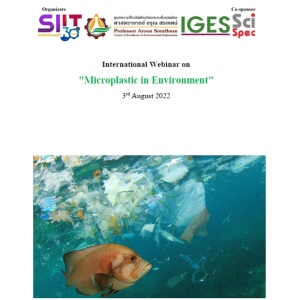Plastic waste has become a major component of riverine and coastal pollution. Recently, the abundance and effects of small plastics, namely microplastics, raise an increasing concern as several studies have shown the harmful effects of microplastics on organisms upon ingestion. Microplastics can also act as vectors to transfer endocrine-disrupting chemicals and other pollutants from the environment to organisms. Currently, most microplastic studies are concentrated in developed countries such as Europe, North America, and the East Asian region. Few studies on the subject have been carried out in the Southeast Asian region. However, countries in the region are facing significant challenges in plastic waste management. In the top 10 countries that have mismanaged plastic waste, 5 countries belong to ASEAN. Therefore, it is necessary to communicate among researchers to work together with this emerging pollutant, so as to find environmental measurements for the prevention of microplastic pollution and to support sustainable plastic waste management.

This webinar is co-organized by Sirindhorn International Institute of Technology (SIIT), Thammasat University, in celebrating the 30th anniversary of SIIT, Chulalongkorn University, Thailand, and the Institute for Global Environmental Strategies (Japan).
The objectives of this international webinar are:
➢To understand sources and measurements for prevention/control of microplastic pollution in the environment.
➢Capacity building of researchers working on microplastics.
➢To create a research network for microplastic pollution.
Topics
➢Monitoring, distribution, sources, and abundance of microplastics.
➢Environmental measurements for microplastic pollution.
➢Removal technologies for plastics and microplastics from the aquatic environment.
➢Microplastic accumulation in biota and impacts.
➢Other topics are relevant to microplastic research.

